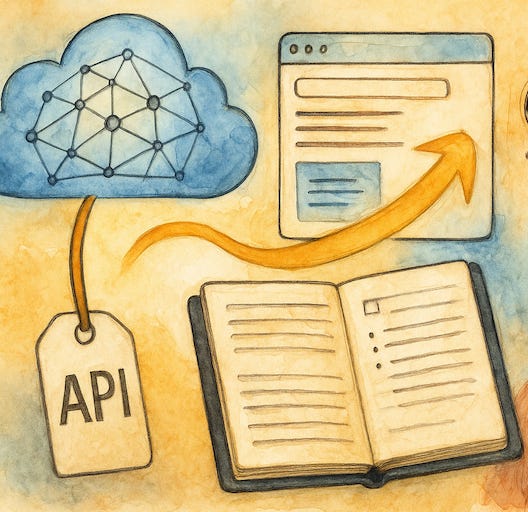Building the Memory Layer for LLMs: Is this the Next Infra Frontier?
How the memory layer gives stateless LLMs lasting context
Welcome to Infinite Curiosity, a newsletter that explores the intersection of Artificial Intelligence and Startups. Tech enthusiasts across 200 countries have been reading what I write. Subscribe to this newsletter for free to directly receive it in your inbox:
Large Language Models (LLMs) are brilliant sprinters. They can reason across billions of tokens, but the moment the chat closes they forget you exist. That statelessness limits every “AI assistant” we’ve built so far. And it bottlenecks AI infrastructure for the next generation of apps.
Enter the memory layer. It’s a persistent store that lets an LLM recall personal facts, project history, and long-running tasks on demand.
What exactly is “memory” for an LLM?
In practice it’s a vector or key–value store that tracks past interactions outside the model. Short-term memory lives inside the context window. Long-term memory lives in a retrieval system.
Tools such as Supermemory expose that store through a universal API so you can memories and later get them ranked by relevance.
How memory stretches the context window
We are now getting million token context windows. This context-window inflation solves part of the problem, but cost and latency scale with tokens. A memory layer keeps the window lean by:
Embedding – Convert every message or document to a dense vector.
Retrieval – At inference time, query for the top-k vectors that match the new prompt.
Compression – Summarize or chunk the hits before injecting them into the prompt.
This workflow keeps token budgets predictable while giving the model the illusion of perfect recall.
Four emerging form factors
Here are the 4 form factors battling for the memory layer. It’s not exactly apples-to-apples, but let’s just go with it because we’re so early in this cycle:
Memory-as-an-API
Examples: Supermemory, LangGraph Memory
UX strengths – Developers can bolt long-term recall into any stack with a single endpoint. No new UI to build.
Challenges – Because it lives in the backend, users don’t feel the magic directly. Adoption depends on developer evangelism and good product integrations.AI-native browsers
Example: Browserbase, Arc Browser
UX strengths – Captures every page you read, listen to, or say. Then makes it instantly searchable. Total recall with zero extra effort.
Challenges – Continuous recording invites serious privacy scrutiny and can hammer local CPU/GPU resources.Note taking apps
Example: Notion, Apple Notes
UX strengths – Memory lives inside the tools people already use to write, clip, and collaborate. So there’s no new habit to learn.
Challenges – You inherit the vendor’s lock-in. Exporting or migrating your second-brain data is still clunky.Ambient screenless devices
Examples: Limitless pendant
UX strengths – Always-on voice capture means you never reach for a phone. Recall feels like chatting with a friend.
Challenges – Shipping new hardware is tough. Users must buy and carry yet another gadget. And battery life plus connectivity can limit real-world utility.
How will they win users?
Zero-effort capture – No one tags notes. The system listens, OCRs, or syncs automatically.
Instant payoff – Powerful recall (“What did Mike promise in stand-up last Tuesday?”) within seconds.
Privacy guarantees – On-device storage or end-to-end encryption will be table stakes.
Cross-app continuity – Memory that spans email → Slack → docs beats single-app silos.
Risks and open questions
Data leakage – If the memory store is breached, attackers get an indexed version of your life. Zero-knowledge schemes and client-side retrieval will matter.
Regulation – The EU AI Act treats personal-data copilots as high-risk. Consent dashboards and data-expiration APIs will be required.
Context collapse – Dumping too many snippets can confuse the model. Smart weighting and hierarchical summarization are active research areas.
How to build it today
A production memory stack is surprisingly tractable:
User events → Embeddings (OpenAI, Cohere) → Vector DB (Weaviate/Pinecone/Milvus) → Retriever → LLMLangChain, LlamaIndex, and OpenAI’s Assistants API all ship pluggable memory modules. So a proof of concept just takes hours as opposed to months. At scale you will want:
Namespace sharding to isolate tenants,
Hybrid search (vector + keyword) for recall accuracy
Offline condensation jobs that create “golden summaries” of stale memories every night.
1M-token windows already exist, but retrieval-based memory is orders of magnitude cheaper and faster.
In short, the memory layer turns a talented but amnesiac LLM into a long-term collaborator. It is the thin but critical middleware between raw model and real product. The part that remembers so the model can reason.
Where do we go from here?
Memory turns stateless LLMs into persistent copilots.
Retrieval + compression expands useful context without ballooning token costs.
APIs, browsers, note apps, and ambient devices are racing to own the layer.
Zero-friction capture and immediate recall will drive user adoption.
Privacy and regulation could decide the winners.
If you are getting value from this newsletter, consider subscribing for free and sharing it with 1 friend who’s curious about AI:


